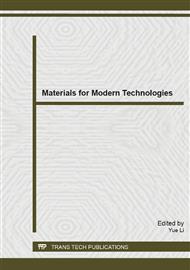p.196
p.200
p.204
p.217
p.221
p.226
p.232
p.238
p.249
Electrospun Absorbable Polycaprolactone (PCL) Scaffolds for Medical Applications
Abstract:
The electrospun scaffold plays a crucial role in tissue engineering for its unique structure which can mimic the structure and biological functions of the natural extracellurlar matrix (ECM). This study discuss the effects of electrospinning parameters, such as applied voltage, tip-collector distance, DMF content percentage and polymer concentration, on the porosity and the surface area of electrospun fibrous scaffolds. The results show that the fiber diameter of electrospun scaffold can be increased with the lower applied voltage, the shorter the tip-collector distance, the smaller DMF content percentage or the higher the polymer concentration. The PCL electrospun scaffolds have high porosity ranging from 85.5 to 92.4%. Furthermore, the surface area to volume ratio exhibits a clear relationship with the fiber diameter. The surface area can be improved through decreasing the diameter of nanofibers.
Info:
Periodical:
Pages:
221-225
Citation:
Online since:
April 2014
Authors:
Keywords:
Price:
Сopyright:
© 2014 Trans Tech Publications Ltd. All Rights Reserved
Share:
Citation:


